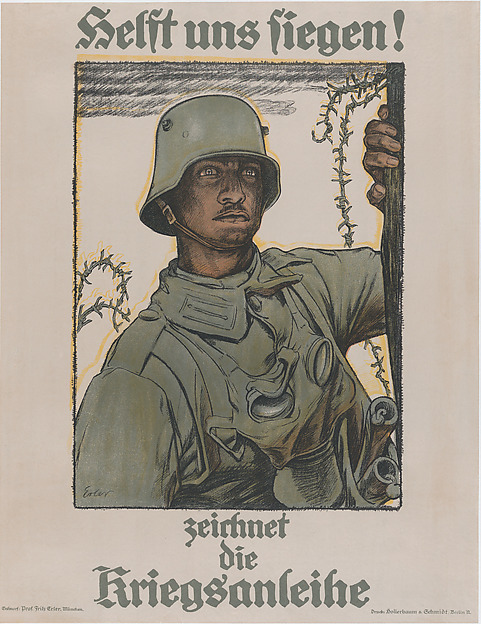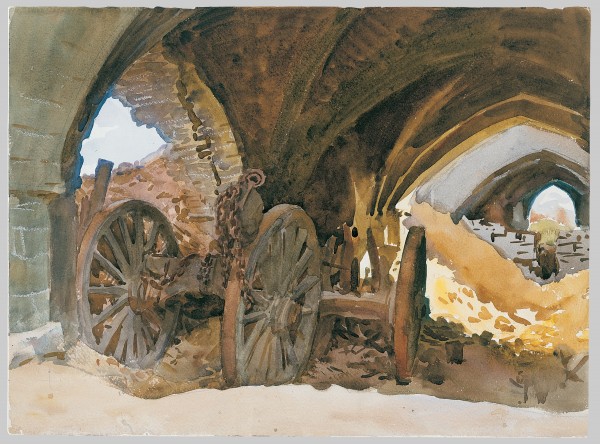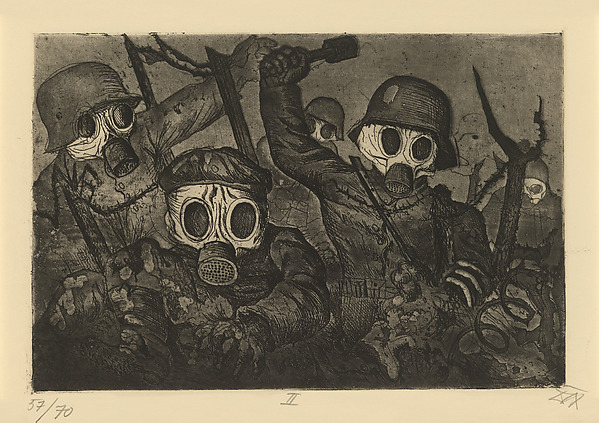Propaganda elides subtlety. Bluntness is the point: to make expressly clear the message its makers—whether it be a government, political party, or individual—want to impart to the viewer. Which isn’t to suggest that sophistication and craft, often of a high level, don’t figure into propaganda. At the entrance to “World War I and the Visual Arts,” museum visitors encounter Destroy This Mad Brute (1917), a recruitment poster for the U.S. Army designed by Harry Ryle Hopps. As a means of instilling patriotic fervor, Hopps’s image is a far cry from the stern gravitas of Uncle Sam. A slavering gorilla wearing a Kaiser hat charges onto the American shoreline. In its right arm, this proto–King Kong wields a bloodied club that reads “Kultur”; in its left, it holds a writhing, topless woman. The latter is an allusion to Germany’s 1914 invasion—or, as it came to be known, “rape”—of Belgium. One doesn’t have to be a student of history to glean the intent of Hopps’s image: aggression is monstrous. As an argument, it doesn’t carry a lot of nuance, but the flair with which it is embodied is effective and, testament to a job well done, memorable.

Dramatics for the sake of political import is par for the course when it comes to propaganda, particularly during wartime. Jennifer Farrell, an Associate Curator in the



